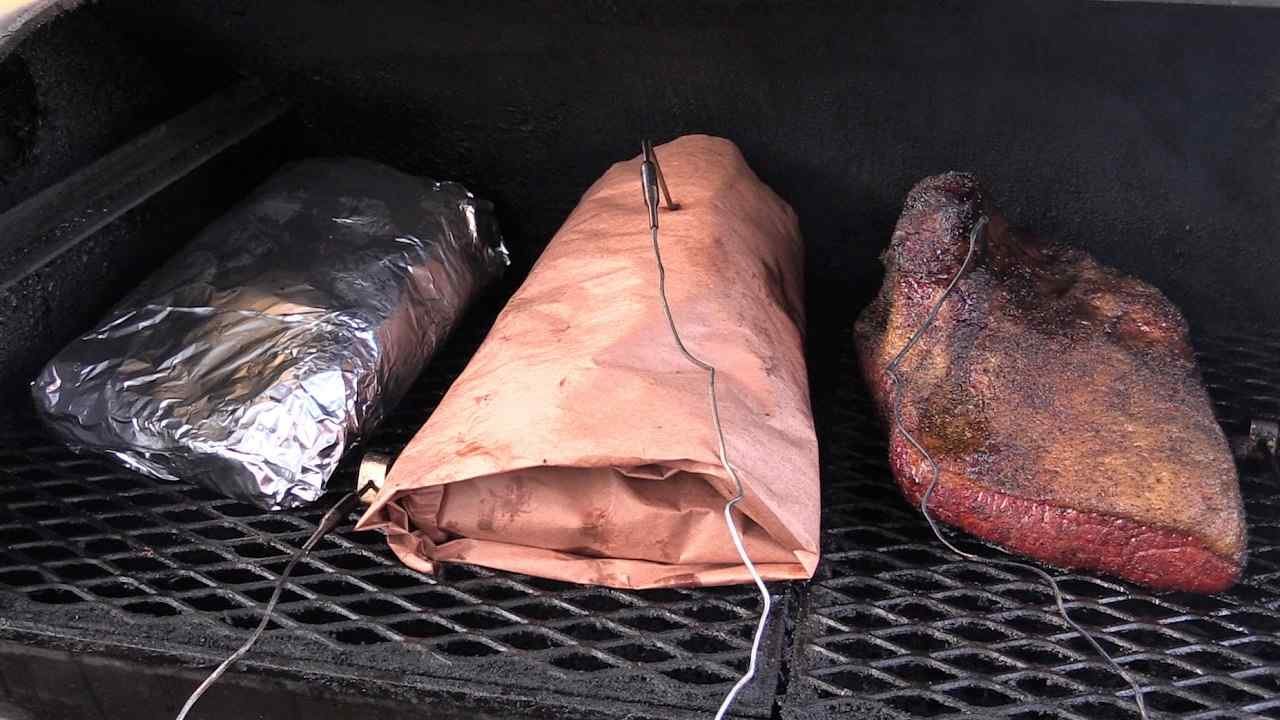Cooking brisket to perfection is an art that many aspire to, and wrapping it at the right moment is crucial. Once wrapped, the timing can vary, but a general guide is to aim for tenderness, not just time.
This technique, often whispered among culinary circles, transforms a good brisket into an unforgettable meal. For those eager to elevate their brisket game, a little insider knowledge awaits.
After wrapping your brisket, the cooking time depends on its size and your desired tenderness. A general rule of thumb is to cook it for about 1 to 2 hours per pound at 225-250°F. For example, a 10-pound brisket would need around 10-20 hours. Use a meat thermometer to check for doneness, aiming for an internal temperature of 195-205°F.
Why Wrap Brisket During Smoking?

Wrapping your brisket during smoking is essential for retaining moisture and enhancing the meat’s deep, smoky flavors, ensuring a tender and succulent final product.
When you’re smoking brisket, the low and slow cooking process develops a crust, known as the bark, which is rich in flavor. However, without wrapping, the brisket risks drying out, as prolonged exposure to heat can evaporate the meat’s natural juices.
Wrapping acts as a barrier, locking in those juices and allowing them to baste the meat internally as it continues to cook. This method not only prevents moisture loss but also contributes to breaking down the brisket’s tough connective tissues.
The result? A brisket that’s not just flavorful, but also incredibly tender, melting in your mouth with every bite.
Foil vs Butcher Paper for Wrapping Brisket

When deciding between foil and butcher paper for wrapping your brisket, it’s important to understand how each material influences the meat’s moisture retention and bark texture during the smoking process.
| Feature | Foil | Butcher Paper |
|---|---|---|
| Moisture Retention | High | Moderate |
| Bark Texture | Softer | Crispier |
| Smoke Penetration | Limited | Better |
| Heat Retention | Excellent | Good |
| Ease of Use | High | Moderate |
Foil, being impermeable, traps more moisture, leading to a tender but softer bark. It’s great for retaining heat but limits smoke penetration.
Butcher paper, however, is breathable, allowing smoke to enhance the brisket’s flavor while maintaining a moderate level of moisture and achieving a crispier bark. Your choice will greatly impact the final taste and texture of your brisket, so consider your preferences carefully.
How Long to Cook Brisket After Wrapping

After you’ve made your choice between foil and butcher paper, it’s important to understand that the cooking time for your brisket can vary greatly depending on the wrap used and the desired internal temperature.
- The anticipation of unwrapping a perfectly cooked brisket, tender and bursting with flavor.
- The frustration of cutting into meat that’s either under or overcooked, despite your best efforts.
- The joy of serving a masterpiece that earns praise from every diner at your table.
Foil typically accelerates cooking due to its heat-retentive properties, potentially shaving off a couple of hours. In contrast, butcher paper allows the brisket to breathe, promoting a beautiful bark without significantly extending cooking time. Mastering this step demands patience and precision, ensuring every fiber of the meat is infused with succulence and aroma.
The Best Internal Temperature for Wrapped Brisket

Understanding the best internal temperature for your wrapped brisket is key to revealing its full, rich flavor and achieving that melt-in-the-mouth tenderness.
Precision in cooking temperature not only guarantees a succulent texture but also deepens the complexity of the brisket’s flavor profile.
| Temperature (°F) | Outcome |
|---|---|
| 195-203 | Ideal for tenderness & moisture |
| >203 | Risk of dryness increases |
| <195 | May result in tough meat |
Aiming for the sweet spot within the 195°F to 203°F range is essential. This range balances the breakdown of tough connective tissues without sacrificing the brisket’s inherent moisture.
Monitoring the internal temperature with a reliable meat thermometer is vital to nail that perfect brisket every time.
How Long to Rest Brisket After Cooking

Allowing your brisket to rest properly post-cooking is essential for locking in those juicy flavors and ensuring the meat is as tender as it can be. The resting phase lets the juices redistribute throughout the brisket, preventing them from running out when you slice into it.
Ideally, you should let your brisket rest for about 1 hour per pound, but at a minimum, aim for a 30-minute rest under a tent of aluminum foil to keep it warm.
- The anticipation of slicing into a perfectly rested brisket brings a mix of excitement and pride.
- Imagine the juices staying within the meat, creating a succulent experience with every bite.
- Envision the transformation from a long-cooked brisket to a masterpiece of tenderness and flavor.
Understanding this process is key to achieving that melt-in-your-mouth brisket every time.
Tips for Juicy, Tender Brisket Every Time

To achieve a brisket that’s both juicy and tender, it’s important to select the right cut, with a substantial fat cap and marbling throughout, as these elements guarantee during cooking, naturally basting the meat.
| Tip | Why It Matters |
|---|---|
| Proper Temperature | Low and slow cooking, around 225°F, guarantees gradual breakdown of tough fibers. |
| Wrapping Technique | Wrapping in foil or butcher paper guarantees preventing drying out and speeds up cooking. |
| Resting Period | Allowing the brisket to rest lets juices redistribute, enhancing moisture. |



